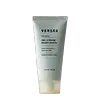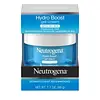What's inside
What's inside
 Key Ingredients
Key Ingredients

 Benefits
Benefits

 Concerns
Concerns

No concerns
 Ingredients Side-by-side
Ingredients Side-by-side

Water
Skin ConditioningGlycerin
HumectantPropylene Glycol
HumectantSqualane
Emollient1,2-Hexanediol
Skin ConditioningCamellia Sinensis Leaf Extract
AntimicrobialAloe Barbadensis Leaf Juice
Skin ConditioningSodium Hyaluronate
HumectantSambucus Nigra Flower Extract
RefreshingSimmondsia Chinensis Seed Oil
EmollientTriticum Vulgare Germ Oil
EmollientVegetable Oil
Skin ConditioningPolyacrylamide
Carbomer
Emulsion StabilisingLaureth-7
EmulsifyingC13-14 Isoparaffin
EmollientTrisodium Ethylenediamine Disuccinate
Phenoxyethanol
PreservativePotassium Sorbate
PreservativeSodium Benzoate
MaskingCitric Acid
BufferingSodium Hydroxide
BufferingWater, Glycerin, Propylene Glycol, Squalane, 1,2-Hexanediol, Camellia Sinensis Leaf Extract, Aloe Barbadensis Leaf Juice, Sodium Hyaluronate, Sambucus Nigra Flower Extract, Simmondsia Chinensis Seed Oil, Triticum Vulgare Germ Oil, Vegetable Oil, Polyacrylamide, Carbomer, Laureth-7, C13-14 Isoparaffin, Trisodium Ethylenediamine Disuccinate, Phenoxyethanol, Potassium Sorbate, Sodium Benzoate, Citric Acid, Sodium Hydroxide
Water
Skin ConditioningDimethicone
EmollientGlycerin
HumectantCetearyl Olivate
Polyacrylamide
Sorbitan Olivate
EmulsifyingPhenoxyethanol
PreservativeDimethicone/Vinyl Dimethicone Crosspolymer
Skin ConditioningChlorphenesin
AntimicrobialLaureth-7
EmulsifyingCarbomer
Emulsion StabilisingSodium Hyaluronate
HumectantEthylhexylglycerin
Skin ConditioningC12-14 Pareth-12
EmulsifyingSodium Hydroxide
Buffering
 Reviews
Reviews

Alternatives
Ingredients Explained
These ingredients are found in both products.
Ingredients higher up in an ingredient list are typically present in a larger amount.
Carbomer is a polymer of acrylic acid. Its main role is to create a gel consistency.
A high amount of carbomer can cause pilling or balling up of products. Don't worry, most products contain 1% or less of carbomer.
Glycerin is already naturally found in your skin. It helps moisturize and protect your skin.
A study from 2016 found glycerin to be more effective as a humectant than AHAs and hyaluronic acid.
As a humectant, it helps the skin stay hydrated by pulling moisture to your skin. The low molecular weight of glycerin allows it to pull moisture into the deeper layers of your skin.
Hydrated skin improves your skin barrier; Your skin barrier helps protect against irritants and bacteria.
Glycerin has also been found to have antimicrobial and antiviral properties. Due to these properties, glycerin is often used in wound and burn treatments.
In cosmetics, glycerin is usually derived from plants such as soybean or palm. However, it can also be sourced from animals, such as tallow or animal fat.
This ingredient is organic, colorless, odorless, and non-toxic.
Glycerin is the name for this ingredient in American English. British English uses Glycerol/Glycerine.
Learn more about GlycerinLaureth-7 is created by the ethoxylation of lauryl alcohol using ethylene oxide. Lauryl alcohol is a fatty alcohol with hydrating properties.
This ingredient is an emulsifier and cleansing ingredient. As an emulsifier, it is used to prevent ingredients from separating. It also helps cleanse the skin by gathering dirt, oil, and pollutants to be rinsed away.
Phenoxyethanol is a preservative that has germicide, antimicrobial, and aromatic properties. Studies show that phenoxyethanol can prevent microbial growth. By itself, it has a scent that is similar to that of a rose.
It's often used in formulations along with Caprylyl Glycol to preserve the shelf life of products.
Polyacrylamide is a synthetic polymer. It is used to stabilize products and bind ingredients. When hydrated, Polyacrylamide forms a soft gel.
Polyacrylamide is low-toxicity. If source properly, it is deemed safe to use in cosmetics.
It should be noted the precursor to Polyacrylamide is acrylamide. Acrylamide is a carcinogen. Most reputable sources of Polyacrylamide will screen for residual acrylamide to make sure the count is in a safe range. Acrylamide is not able to be absorbed through the skin.
We recommend speaking with a professional if you have concerns.
Learn more about PolyacrylamideSodium Hyaluronate is hyaluronic acid's salt form. It is commonly derived from the sodium salt of hyaluronic acid.
Like hyaluronic acid, it is great at holding water and acts as a humectant. This makes it a great skin hydrating ingredient.
Sodium Hyaluronate is naturally occurring in our bodies and is mostly found in eye fluid and joints.
These are some other common types of Hyaluronic Acid:
Learn more about Sodium HyaluronateSodium Hydroxide is also known as lye or caustic soda. It is used to adjust the pH of products; many ingredients require a specific pH to be effective.
In small amounts, sodium hydroxide is considered safe to use. However, large amounts may cause chemical burns due to its high alkaline.
Your skin has a natural pH and acid mantle. This acid mantle helps prevent harmful bacteria from breaking through. The acid mantle also helps keep your skin hydrated.
"Alkaline" refers to a high pH level. A low pH level would be considered acidic.
Learn more about Sodium HydroxideWater. It's the most common cosmetic ingredient of all. You'll usually see it at the top of ingredient lists, meaning that it makes up the largest part of the product.
So why is it so popular? Water most often acts as a solvent - this means that it helps dissolve other ingredients into the formulation.
You'll also recognize water as that liquid we all need to stay alive. If you see this, drink a glass of water. Stay hydrated!
Learn more about Water